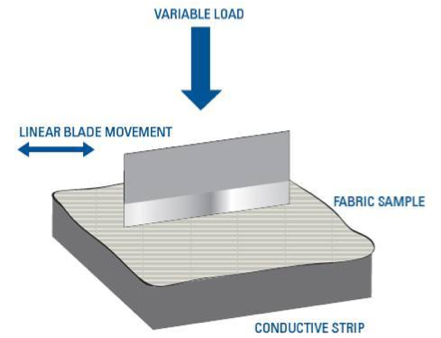When purchasing cut resistant gloves, you want to find the best one for your job, but how do you know that you'll be getting the correct amount of protection in the glove you purchase? There are two major standards that cut resistant and safety gloves abide by, one put forth by the American National Standards Institute and the International Safety Equipment Association and the other by a European agency.
ANSI/ISEA 105-2000/2005
The ANSI/ISEA 105-2000 was written in 2000 and revised in 2005. This standard provides guidelines for choosing gloves according to qualities such as cut resistance, abrasion, heat, cold, flame resistance, puncture, and chemical resistance. The revised standard also addresses choosing gloves for tasks that include vibration to the hand or wrist, as well as selecting gloves that can withstand biohazards or radiation.
abrasion, heat, cold, flame resistance, puncture, and chemical resistance. The revised standard also addresses choosing gloves for tasks that include vibration to the hand or wrist, as well as selecting gloves that can withstand biohazards or radiation.
This comprehensive standard tests gloves for cut resistance by determining how much weight is required for a straight blade to cut through a material traveling 2.5 millimeters, or about one inch. Through this testing, experts report that as the weight increases, the glove's rating increases as well. The cut resistant glove rating system goes from 0-6 showing the higher the ranking, the higher the cut resistance rating. The best cut resistant gloves are typically the ones with a higher ranking, because this means they provide the greatest protection against injury. However, depending on your job, a lower ranking could be sufficient as well.
|
ANSI/ISEA 105-2005 Mechanical Ratings: |
|||||||
|
Rating |
Level 0 |
Level 1 |
Level 2 |
Level 3 |
Level 4 |
Level 5 |
Level 6 |
|
Abrasion Resistance* (Cycles) |
< 100 |
≥ 100 |
≥ 500 |
≥ 1000 |
≥ 3000 |
≥ 10000 |
≥ 20000 |
|
Cut Resistance (Grams)** |
< 200 |
≥ 200 |
≥ 500 |
≥ 1000 |
≥ 1500 |
≥ 3500 |
- |
|
Puncture Resistance (Newtons) |
< 10 |
≥ 10 |
≥ 20 |
≥ 60 |
≥ 100 |
≥ 150 |
- |
|
* Abrasion ratings 0 through 3 are based on measurements with a 500-gram load. Levels 4 through 6 are measured with a 1,000-gram load. |
|||||||
Generally, cut resistant and safety gloves, which receive a rating of level of 1-2 would be considered to have moderate or standard protection. Typically, these are woven gloves that are recommended for use in jobs that handle mildly abrasive materials. Level 2 cut resistant gloves can be found here.
Cut resistant glove ratings that fall between a level 3 and 6 are considered heavy duty or high-performance protection. Level 3 cut resistant gloves, and above, will have an outer coating or multiple layers to increase their cut resistance level. These higher rated gloves are used in jobs that require contact with sharp and abrasive objects and have a great amount of durability. For a pair of high quality level 3 cut resistant gloves look here.
EN 388

The EN-388, a European testing standard similar to the ANSI/ISEA 105, also examines the performance of cut resistant gloves based on abrasion, tear, puncture, and cut resistance. The EN-388 uses a ranking system of 1-5. These ratings are determined by the number of times a rotating blade needs to cycle in order to cut through the test material for a distance of 50 millimeters, or about two inches. The more rotations needed, gives a higher cut resistant glove rating. Although this European standard is not required here in the US, many gloves also include this glove rating.
When considering cut resistant glove ratings, it is important to remember that the ANSI/ISEA and EN 388 are standards based on different testing methods, which in turn produces different cut resistant glove ratings. Some experts believe that the ANSI/ISEA testing is more accurate to workplace environments than the EN-388, and therefore can be more reliable.
*For more information on where typical cut resistant glove materials are ranked, check out last week's blog.




1 comment
I deal with glass needless and nails wood hydraulic oil sewage water wht u can do for me I work for nycha new York housing Authority